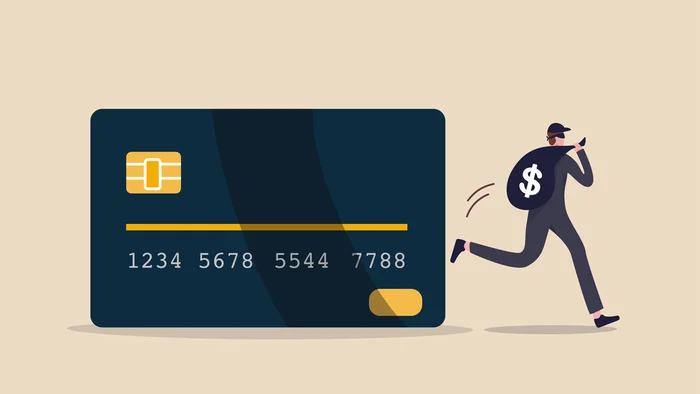Credit card fraud is a persistent and growing threat in today’s digital age. With a staggering 80% of US credit cards in circulation having been compromised and the losses from credit card frauds in the US alone amounting to USD 11 billion in 2020, it’s clear that both individuals and businesses need to take proactive steps to protect themselves.
This comprehensive guide delves into the various aspects of credit card fraud, its implications, and effective strategies to prevent it.
A Snapshot of Credit Card Frauds

Credit card fraud encompasses various methods and techniques used by fraudsters to illegally obtain funds. Some of the most common types of credit card fraud include:
- Physical theft of cards: This involves the outright theft of a physical credit card, which can then be used for unauthorized purchases.
- Card-not-present attacks: Fraudsters use stolen card information for online transactions where the physical card is not required.
- Card-not-received frauds: This occurs when new or replacement cards are intercepted before they reach the cardholder.
- Counterfeiting and skimming frauds: Fraudsters create counterfeit cards using stolen card data obtained through skimming devices.
- Account takeover: Fraudsters gain access to an individual’s account information and change account details to commit fraud.
- Phishing and other social engineering attacks: These tactics trick individuals into providing their card details through deceptive communications.
- Identity theft and false application frauds: Using stolen personal information, fraudsters apply for credit cards in the victim’s name.
- Carding and cashing out: Involves using stolen card information for small transactions to validate the card, then making larger withdrawals or purchases.
The Cost of Credit Card Fraud
The financial impact of credit card fraud can be substantial. The average loss from credit card fraud is USD 311, but significant losses over USD 10,000 have also been reported, with 39,734 such reports in a given year. While zero-liability policies and federal laws limit cardholder liability to USD 50 if reported within 60 days, the broader implications for merchants and financial institutions are severe.
From a merchant’s perspective, credit card fraud leads to financial damage from chargeback penalties, high processing fees, authentication costs, and product loss. Additionally, genuine transactions might get blocked if the merchant is flagged as high-risk, causing reputational damage. For banks and financial institutions, the zero/limited liability clauses lead to financial losses, alongside the damage to their reputation.
Ways to Prevent Fraud on Your Credit Card
What Can Banks and Merchants Do to Shield Customers?
- Deploy Next-Gen WAF: Banks and e-commerce merchants should deploy a next-gen Web Application Firewall (WAF) with global threat intelligence, self-learning systems, intelligent automation, and analytical capabilities. These tools are effective in anomaly detection as they continuously assess transactions against a baseline and raise red flags.
- Engage in Reputation Monitoring: This involves detecting and automatically blocking traffic from known bad sources and malicious IP addresses. Continuous monitoring and blocking of bad bot traffic can be achieved through bot intelligence feeds, behavioral analysis, pattern and heuristic analysis, fingerprinting, velocity checks, and progressive challenges.
- Geo- and Rate-Limiting: By building custom rules, banks and merchants can automatically block traffic from certain geographical areas where they do not conduct business. Rate limiting restricts the number of attempts from single IP addresses within given timeframes, preventing bot-based fraud attempts.
- Leverage Security Professionals: Certified security professionals can help custom-build policies to prevent business logic flaws and continuously fortify security posturing.
What Can Individuals Do to Protect Themselves?
- Take the Physical Safety of Credit Cards Seriously: Always keep credit cards secure and report immediately if a card is stolen or lost.
- Effective Credit Card Fraud Detection: Proactively monitor billing statements for any suspicious or unauthorized transactions. Set up real-time alerts for transactions and immediately report any inconsistencies to the card issuer.
- Beware of Phishing: Be cautious of requests for credit card details. Always verify the legitimacy of such requests and never share sensitive information like CVV numbers, passwords, or login credentials.
- Prioritize Safety in Online Transactions: Ensure the legitimacy of online platforms before making purchases. Look for SSL certificates and heed search engine warnings about site security.
Additional Measures to Prevent Credit Card Fraud
- Avoid using public Wi-Fi for online transactions.
- Do not engage in transactions in public places.
- Shred all card-related documents before discarding them.
- Strengthen passwords and PINs on all cards and related accounts, avoiding default and obvious passwords.
Managed WAF for Enhanced Security
A Managed Web Application Firewall (WAF) offers comprehensive protection starting at USD 99. It includes guided onboarding, monitoring of latency, false positives, DDoS attacks, custom rules, and more. Try it free for 14 days to enhance your website security.
Conclusion
Preventing credit card fraud requires a combination of vigilance, advanced technology, and proactive measures from both individuals and institutions. By employing self-learning, AI-powered systems, and intelligent, managed security solutions, banks, merchants, and individuals can significantly reduce the risk of credit card fraud and its associated costs.
